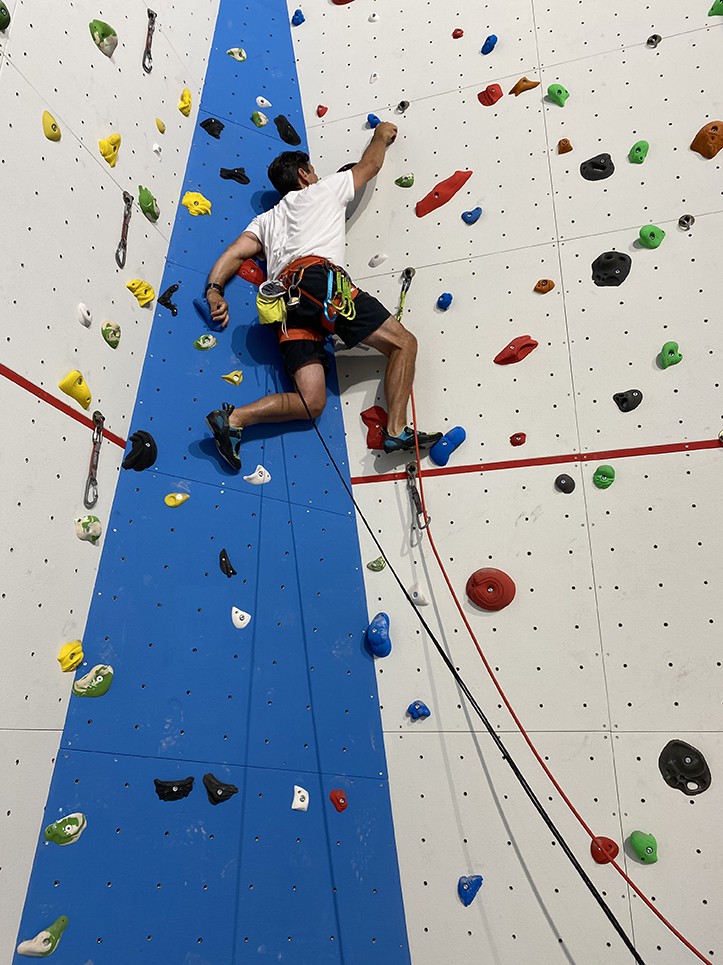
build a climbing wall
There are three distinct and complementary types of artificial climbing walls called ACS (Artificial Climbing Structures):
Their safety is regulated by 3 European standards:
- EN 12572-1:2017 for rope walls
- EN 12572-2:2017 for bouldering walls
- EN 12572-3:2017 for removable holds
Our field experts are at your disposal for any quote.
The rope climbing wall (with belay points).
The rope climbing wall is dedicated to rope climbing beyond 3 m in height for beginners and experienced climbers, regular training and competitions.
The minimum height may vary according to use:
- Elementary schools: 4 m to 5 m
- Middle Schools: 6 m
- High schools: 7 m
The dimensions of competition walls:
- Departmental: 9 m high x 24 m wide
- Regional: 11 m high x 36 m wide
- National: 13 m high x 42 m wide
- International: 15 m high x 51 m wide
the bouldering wall (without belay points)
The bouldering wall is dedicated to climbing without rope up to 4.00 – 4.50 m in height for beginners and experienced climbers, regular training and competitions.
A landing mat is required to cushion falls, with a thickness of 30 cm or 40 cm, in accordance with standard EN 12572-2:2017.
The minimum height may vary according to use (height measured above the landing surface):
Pre-schools: 1.60 m
Primary schools: 2.50 m
Adult walls: 4.00 m when it is possible to stand at the top of the wall, otherwise 4.50 m
For competitions, the heights and widths are as follows:
- Departmental: 4.50 m high x 24 m wide
- Regional: 4.50 m high x 36 m wide
- National: 4.50 m high x 42 m wide
- International: 4.50 m high x 51 m wide
the speed climbing wall
The speed climbing wall is specifically adapted to the requirements of competitive climbing, regardless of the level (departmental, regional, national or international).
There are two versions of the official speed wall:
- speed wall of 10.50 m in height
- speed wall of 15.00 m in height
Incline: –5 degrees and width: 3 m per lane
The hold inserts are placed on the panels according to a particular pattern.
There are only two types of holds: hand holds (24 in total in the 10.50 m version and 40 in the 15.00 m version) and foot holds (16 in total in the 10.50 m version and 22 in the 15.00 m version).
The hand holds are more complex and allow for different grips depending on the orientation; their shape offers four different possible grips.
The grade is considered a 5a/5b.
pyramide tips
For a rope climbing or bouldering wall, always favour width over height, as width determines the number of active users.
Consider equipping the speed climbing wall with progression belay points to provide additional tracks in addition to speed lanes.